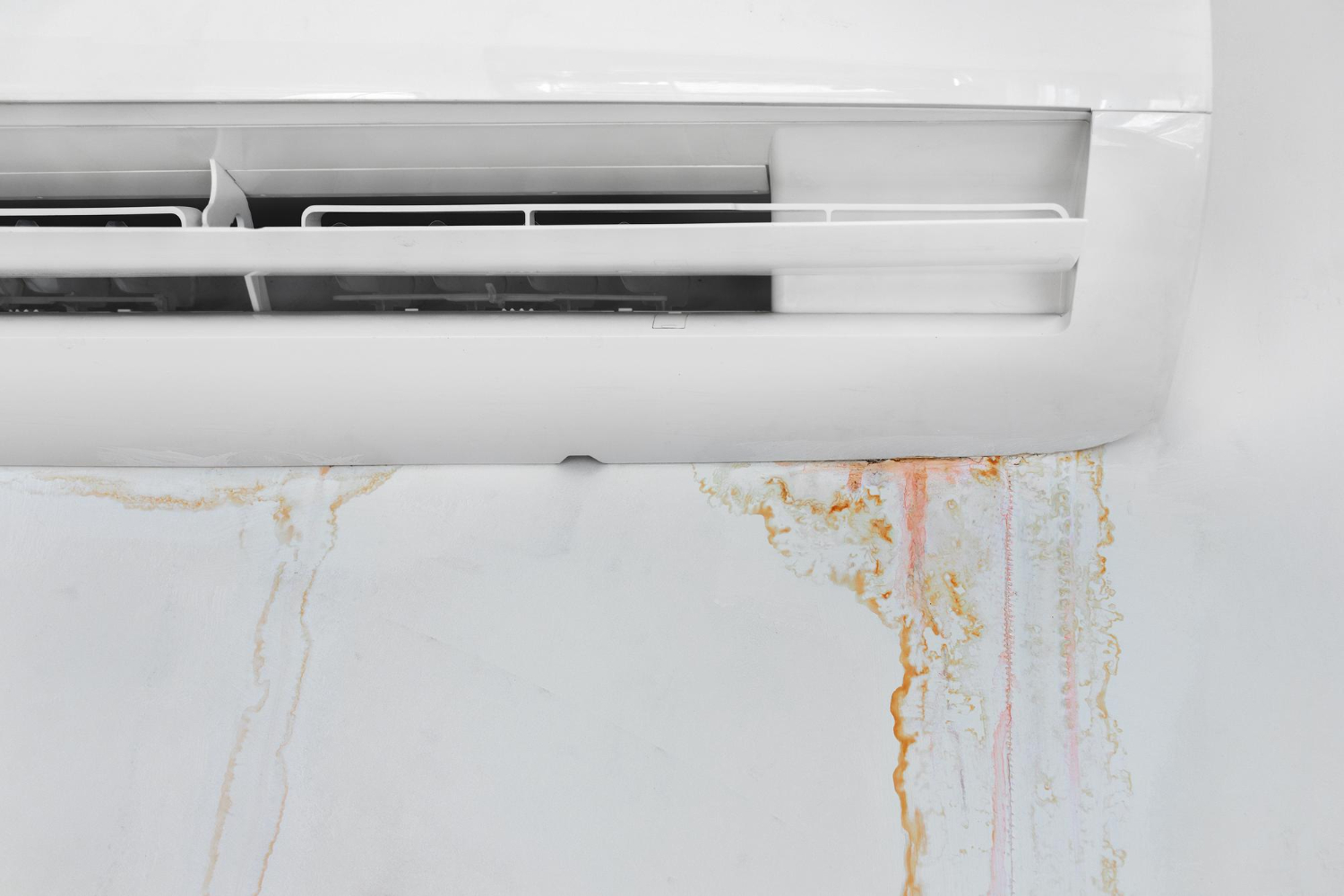Water spots can look like harmless stains, but they often point to a much bigger issue happening behind ceilings or walls. These marks usually show up as yellow, brown, or dark patches, sometimes surrounded by rings of discoloration. You might spot bubbling paint, a musty odor, or even a soggy surface if the leak has gone unnoticed for a while. Summer humidity in Tomball can make things worse, especially if moisture gets trapped inside walls or ceilings without enough ventilation.
Ignoring these signs can lead to serious damage. What starts with a single water spot may end up causing mold growth, weakened drywall, or rotted wood framing. Moisture can break down insulation and even compromise a home’s structure if left unchecked for too long. Understanding where these spots come from and taking fast action could help stop further problems and save money on big repairs.
Common Causes of Water Spots on Ceilings
When a water spot shows up on the ceiling, it usually means that something above that area has leaked or is letting in moisture. In two-story homes, this could involve plumbing issues between the floors. In single-story homes, the attic or roof might be the source. Finding the exact reason often takes time, but there are a few common culprits to consider.
1. Leaky Roof
A damaged or aging roof is one of the most frequent causes of ceiling stains. Water can enter through:
– Cracked or missing shingles
– Worn-out flashing around chimneys or vents
– Clogged gutters causing water to pool and back up
These issues are more noticeable during or right after rain. Homeowners may notice spots forming in areas near the corners or middle of the ceiling where water tends to flow after entering the attic.
2. Faulty Plumbing
A hidden pipe leak from an upstairs bathroom, washing machine, or kitchen can cause water to drip onto the lower level ceiling. This typically results in more localized staining, especially under bathrooms or laundry rooms. A slow leak might take time to show up but can soak wood framing, sheetrock, and insulation long before stains appear.
3. HVAC Issues
Another cause comes from problems with your HVAC system. If the AC drain line is clogged or blocked, the condensation your system produces may overflow into the ceiling. Poor duct insulation in attic spaces can also cause warm, humid air to condense when it touches cold metal surfaces. Over time, this moisture builds up and leads to water spots, especially during peak cooling months in Tomball.
Common Causes of Water Spots on Walls
Wall stains may show up vertically along the sheetrock or near areas like windows, baseboards, and door frames. Figuring out how they got there involves thinking about both inside and outside sources of moisture.
Here are the most common reasons walls develop water spots:
– Leaking Pipes Behind Walls
Older or damaged pipes running through walls can leak small amounts of water over time. These leaks often show up as dark or damp areas that gradually expand downward. Unlike a sudden burst, slow leaks may go unnoticed for weeks or months.
– Exterior Wall Damage
When rainwater enters through cracks in siding or gaps around windows, stains may appear on interior walls. Bad sealing, gaps in caulking, or loose panels can let moisture seep through from the outside. These wall stains usually show up after storms or steady rain.
– Condensation Buildup
Poor insulation or lack of ventilation can also cause condensation issues inside the home. When humid air hits cold wall surfaces, it creates tiny droplets that soak into the wall over time. This happens most in corners, closets, or around air vents where airflow is limited. It may look subtle at first but worsens in hot, humid climates like Tomball.
Homeowners might think these spots are just cosmetic, but the longer the moisture stays trapped, the better conditions become for mold and mildew to grow. That means it’s not just the wall at risk—it’s the air quality, too. Even one stained area may be the result of a larger water issue somewhere nearby.
Preventive Measures and Immediate Actions
Once water spots appear, the damage has already started. Instead of waiting to see how bad it gets, the best move is to act quickly. Early steps can limit how serious the damage grows and prevent additional trouble down the road. Many of the most expensive repairs could be avoided with simple checks done throughout the year, especially during Tomball’s hot summer months when HVAC systems run nearly nonstop.
Start with routine inspections. Homeowners should regularly look at ceilings, walls, and attic spaces for odd smells, discoloration, or damp spots. Schedule seasonal roof checks, particularly after strong storms. Gutter maintenance, especially in areas where leaves or debris collect, helps prevent water from sitting near the edges of the roof and working its way into the home.
Plumbing and HVAC setups should also be on the inspection list. A few things to watch for:
– Sudden drops in water pressure or rising water bills
– Odd noises from pipes or running water when fixtures are off
– Visible condensation or water near AC units or ductwork
– Pools of water forming below toilets, tubs, or under sink cabinets
Preventive steps like removing extra moisture, sealing cracks around windows and doors, and maintaining insulation help protect hard-to-see spaces. Still, some leaks are well hidden. If water spots worsen or appear in more than one place, it’s time to seek help. Once you spot damage, delaying repairs can make everything more costly.
What Professional Water Leak Detection Can Do for Your Home
It’s easy to second-guess where the water is coming from when stains show up. Some problems may seem minor at first but come from active leaks in places you can’t see without the right tools. This is where water leak detection becomes important. It’s not just about tracking surface moisture — it’s about getting to the actual source of the problem.
Using specialized equipment, our professionals can pinpoint even slow or hidden leaks without needing to open walls blindly. This limits how much disruption happens during repairs, making the process cleaner and faster. Accurate detection also helps prevent future damage by making sure no leak gets missed.
Professional water leak detection offers a few immediate benefits:
– Locates the origin of leaks without breaking into walls or flooring
– Helps avoid unnecessary damage caused by guesswork
– Confirms the full extent of moisture and spot damage
– Supports lasting repairs by exposing the real cause of the leak
This matters in Tomball, where summer humidity only makes water damage worse. Moisture may be hanging in the air already, so even the smallest wall or ceiling leak can lead to faster rot or mold than expected. Fast detection shortens how long moisture stays trapped, which protects the home’s foundation and keeps repairs manageable.
Protect Your Home from Silent Water Damage
Water spots are more than a cosmetic issue. They serve as a warning sign for something happening behind the surface, whether that’s a roof problem, a pipe leak, or AC condensation that’s been slowly collecting. Spotting the issue quickly helps avoid long-term repairs, indoor air issues, or high moisture buildup that can lead to mold.
In Tomball, with warm summers and active use of cooling systems, it’s especially important to stay ahead of water leaks. Even something like a clogged AC drain can send water back into your ceilings. A single afternoon spent checking for moisture, running your fingers along windowsills, or lifting ceiling panels in the attic helps spot problems early.
Letting water damage go unchecked doesn’t just affect home comfort — it affects structure, storage, and safety. When stains reappear after drying or spread to new spots, it’s time to look deeper. Clean walls and intact ceilings are one thing no homeowner wants to take for granted, and once damaged, they don’t fix themselves. Acting early is always the smarter route.
Ensure your home stays protected from hidden water damage by relying on the experienced team at Tradition Services. With precise water leak detection in Tomball, we can identify and address issues before they escalate into costly repairs. For a quick estimate or to book a service visit, please contact us today.

